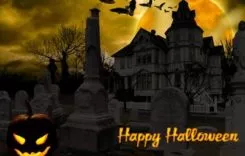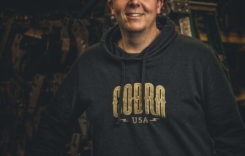Adding On Auto Tune
Speed’s Spotlight By now everyone knows a Harley needs that basic “Stage 1” setup, the pipes, a free-flowing air filter, and the ECM re-map to optimize fuel delivery. It’s a given, and for plenty of riders it’s enough. “But these guys might want to consider adding just one more thing,” says Jason Hanson of Speed’s Performance Plus. “Putting an Auto Tune on top of that Power Commander V brings lots more to the game, everything from crisp performance at all altitudes, temperatures, and humidity to a real boost in fuel economy.” It’s a win/win move and not something limited to just those mildly modified bikes. Big-inch/high-compression bikes can gain plenty here too in a different area. Most everyone’s aware of the need for an FI re-map. That’s why the aftermarket is filled with all those fuel-management modules and if we’re to believe the hype, all you have to do is install one of these electronic wonders and go for a ride. Presto! The bike’s automatically recalibrated to fuel-delivery perfection. Sounds great, but in reality this deserves a closer look. Auto tune absolutely does work, let’s get that right out of the way. “But to perform at its best,” Jason explains, “we’ve found that you really need a custom dyno-tune first.” A contradiction? Not necessarily, say the guys at Speed’s. Their preferred method, and one that’s made countless riders happy, is to use that auto tune as an add-on, a supplement to the kind of dyno-developed tune they’ve always done. Think of it as insurance that the custom tune stays correct in all conditions and situations. “What I’ll generally do setting up an auto tune after the base map has been developed, is concentrate on the areas from 2,000 rpm up to around 3,500 rpm,” Jason says. He’ll do that from about 2 percent throttle opening to approximately 40 percent throttle. That’s the cruising range most riders stay in most of the time and the auto tune will assure that the bike remains 100 percent dialed-in there regardless of the altitude, ambient temperature, or relative humidity. “It becomes the ultimate tuning solution,” Jason feels. “While the base program can be set for peak power, in those everyday-cruising ranges I can dial-in the auto tune for optimum fuel mileage and smoothest running, leaning out the mixture just slightly there.” And yes, that’ll result in a slight rise in engine temperature. But remember, Jason adds, all this fine-tuning is happening in RPM ranges where the bike will be running down the highway receiving plenty of cooling airflow. “And the rest of the map,” he notes, “is left alone, still optimized for power.” All-around ridability like that isn’t the only auto tune benefit. Big-displacement/high-compression engines are increasingly common and a properly adjusted auto tune can pretty much eliminate the detonation problems these engines often incur. “My own bike’s the perfect example,” Jason says. “It’s built with 11:1 compression and makes 130 horsepower, and it never detonates.” Once again, using that auto-tune add on specific areas in the original fuel-delivery map can be carefully manipulated, but here the idea is to richen things up just a little where called for. Big engines tend to run a little warmer and a bit more fuel in the right places can go a long way toward cooling things down. Sure, there’s a fuel-mileage sacrifice but a detonation-free engine is well worth that trade-off. And auto tune allows it. Let’s talk price. An auto tune unit is going to cost around $350, and that’s on top of the Power Commander V. It’s not an impulse buy. But it’s also something that can be added as finances permit. Those pipes, air filters, and the Power Commander can go on first with auto tune added later. “And if I’ve already set up a bike, adding that auto tune is easy,” Jason says. Now to be completely fair, some of those auto tune systems offer their own versions of a custom fuel map to load in and then rely solely on the O2 sensors to “read” the bike and make the changes. By necessity, though, those pre-written maps will be somewhat generic and never come as close to perfection as a real-time dyno session done on your bike. And the closer you get to correct at the start has a direct result on just how close, and perfect, that auto tune will be at the end. Something to think about. Talk with the guys at SPP the next time they’re at a nearby event. Better still, talk with riders already set up with a custom-calibrated auto tune. Like Jason Hanson says, it’s about as close to the ultimate tune as you’ll get. **Source:** Speed’s Performance Plus [speedsperformanceplus.com](http://www.speedsperformanceplus.com) (605) 695-1401 – MN (605) 695-2272 – SD [[email protected]](mailto:[email protected])







